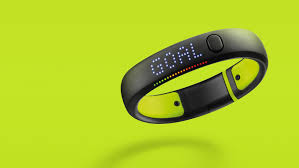In this cross-posting from AW360 Alex Hayes looks at what happened to all those creative technologists who were hailed as the future of advertising just a couple of years ago.
A few years ago, a strange breed of folk started infiltrating advertising agencies across the world. They wore the right uniform, the black t-shirts and jeans, but they just seemed – different.
Instead of sitting on the open-plan floors with the other ‘creatives’ they squirrelled themselves away in newly built ‘labs’ and started taking thins apart, playing with wires, and tubes, and screens and, well, all manner of strange stuff.
Occasionally they’d emerge from these caves muttering something about being close to cracking the means of projecting images directly onto human eyeballs, but for the most part they were left to their own devices.
They were treated with kid gloves by agency CEOs, and skepticism by the planning and creative teams. Most of them didn’t really know what to do with them, unless a brief came up, they thought might be award worthy…
These men (let’s face it in 99% of cases they were blokes) were the creative technologists.
For agencies, and therefore the brands they were trying to serve, technology was the future, and boy were they going to be the ones to ride the wave of disruption. They’d create the products which would make their clients (and more importantly) them, famous. I remember one agency even hired a builder. Yes, a builder. I still can’t work out why either.
Fast forward to 2019 and how many agencies are still operating a ‘lab’? How many have someone with the title ‘creative technologist’ on the books? And how many are hailing product as the way to bolster their pressurised P&Ls? Not a lot, and those that are mostly the smaller ‘innovation’ and tech-focused shops clients go to for those specialist, often PR-driven, briefs.
You can trace the origins of this techgasm back to Nike and R/GA’s success with the launch of the Nike+ Fuelband in early 2012. This early piece of wearable tech built on the (now obvious but back then very clever) Nike+ platform which had been running since 2006, giving athletes a means to track their efforts digitally.
To say the Fuelband was a success is an understatement – at least in advertising circles. It picked up dozens of domestic and international awards, including the Titanium Lion at Cannes – the one every fame hungry Executive Creative Director wants to snare.
And from very early in the piece it was quite clear that awards, and not client outcomes, were what most agencies really wanted to wring from their techheads.
Rather than being tasked with something prosaic like finding better ways for their clients to use existing and emerging channels, they became the ‘social media gurus’ of five years prior, tasked with driving ‘innovation’ at their agencies.
For agencies it was a new way of creating work to win awards without being able to be accused of ‘scam’. Because the ‘prototype’ and accompanying case study video (and often associated PR) was the campaign.
So we got things like:
-
- A clothes peg which could tell you when it was raining outside (because looking out of a window is SO 2015)
- Underwear to allow you to get ‘intimate’ with your beloved when they are in another country (although the case study was shot in two hotel rooms next to each other)
- A paint which makes cyclists glow in the dark (was it cheaper than buying decent lights? We’ll never know…)
- Buoys which could identify sharks off of beaches and alert the authorities to them, but which turned out to be a little overly sensitive.
However the most egregious example of tech I can think of was the I-Sea app, created by Grey Singapore and claiming to help save the lives of refugees in the Mediterranean by allowing anyone to download it and scour satellite feeds in real-time, and alert authorities when they spotted a boat.
The problem with that was it literally didn’t work. Like, not even remotely. Grey did eventually return the Bronze Lion it won after a massive uproar.
So why didn’t the tech revolution work out?
In part it’s because agencies have realised they’re not going to make their fortunes by creating products for clients and then flogging the IP around the world. It was a nice pipe dream they really weren’t equipped for.
There’s also the slackening of client appetites for tech-led solutions in quite the same way. They can be expensive, and the media are now a little more skeptical about the vaunted prototype being wheeled out to them by Brand X in order to garner a few more column inches (I say a little, there’s always morning TV to fill). The days of the digital stunt appear to be over.
And these guys were expensive to keep on, many were well educated with multiple degrees in complicated stuff and had great skillsets which don’t come cheap in what was a competitive marketplace for them.
And where are they now?
There are still a few around the marketing industry, at specialist shops and production-oriented businesses which specialise in bleeding-edge tech integrations. And inevitably the global tech titans have a smattering of them still on the books as well, helping to create use cases and evangelise about their new products.
Others have transitioned job titles to become ‘creatives’ of some form or another – often still leading when tech-based solutions are required, just not creating the same eye-catching work they were tasked with previously.
Now the industry focus has shifted to customer experience, the shiny new sales toy in the armoury. And if you can figure out what the next one will be, keep it to yourself, there’s probably a few bucks (or at least Cannes Lions) in it for you.




